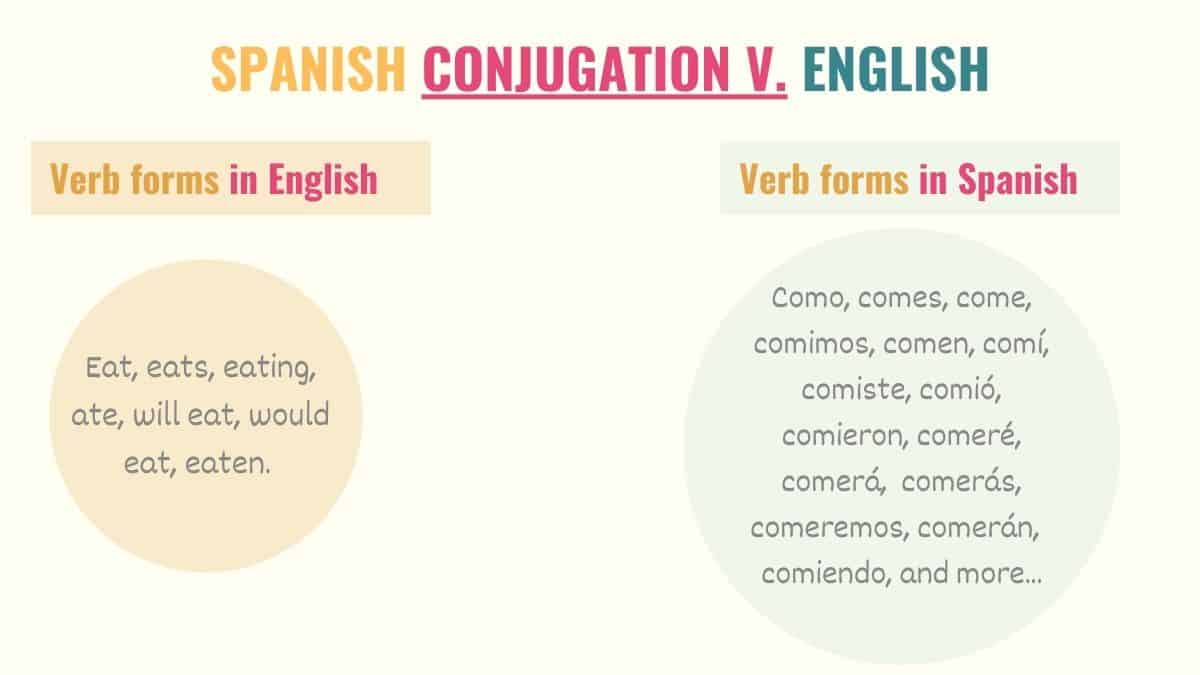If you’re learning Spanish, you’ve likely heard about the importance of grammar. Grammar is a set of guidelines and norms that indicate how words, structures, sounds, and sentences work and are formed in Spanish. Having a basic understanding of grammar allows you to speak Spanish more correctly and avoid learning any bad habits that will set you back.
So, just in case you were wondering…Yes, grammar is crucial for learning Spanish.
Since grammar is such an important element in your Spanish learning, in this guide, you’ll find key information about this topic. In addition to providing you with some basic grammar rules, I’ll also include some useful tips and resources that will help you get a deeper understanding of Spanish grammar.
These are the topics we’ll go through in this article:
- Basic & Key Spanish Grammar Rules
- 10 Top Differences Between Spanish & English Grammar
- How to Learn Spanish Grammar
- Resources to Learn Spanish
Basic & Key Spanish Grammar Rules
When it comes to grammar in Spanish, many students feel overwhelmed, thinking that they have to learn many complex rules. As you’ll learn in this article, grammar is essential to communicating ideas effectively and achieving fluency in Spanish. However, this doesn’t mean that you need to be an expert on the topic. In fact, you can start by learning some basic rules.
Here is a list of basic Spanish grammar rules you should know:
- Spanish nouns have gender.
- Adjectives must agree in gender and number with the noun.
- Subject pronouns are not necessary in a sentence.
- Masculine and plural adjectives are used to describe two nouns that have a different grammatical gender.
- Reflexive verbs express that a person is both the subject and object of an action.
- Spanish preterite is used to talk about finished or specific actions in the past.
- ‘Haber’ is an auxiliary verb, and it’s used to build Spanish compound tenses.
- ‘A el’ must always be contracted to ‘al’.
- ‘De el’ must be contracted to ‘del’.
- Object pronouns are attached at the end of a verb when that verb is in infinitive, gerund, or imperative form.
- The imperfect tense describes the background of a past action or event.
- When talking about likes and dislikes, the verb ‘gustar’ can only be used in singular or plural forms. Its conjugation depends on the thing or activity you like.
- The verb ‘estar’ refers to an object’s location, and it describes temporary states.
- The verb ‘ser’ describes permanent characteristics, and it’s used to tell the time in Spanish.
- To say your age in Spanish, you need to use the verb ‘tener’.
- Even though it’s the direct translation of ‘to have’, ‘tener’ is not used as an auxiliary verb.
- The meaning of Spanish verbs can change if it’s being used in the reflexive form.
- To tell the time in the past, you have to use the Spanish imperfect tense.
- When using both direct and indirect object pronouns in a sentence, indirect pronouns are placed first.
- When both direct and indirect object pronouns refer to the third person, the indirect pronoun is replaced by ‘se’.
- The pronoun ‘tú’ is used to informally address people the same age as you, family and friends.
- The pronoun ‘usted’ is formally used to address older people or authoritative figures.
- Not adding an accent mark when needed can change the meaning of a word.
- The impersonal form ‘hay’ doesn’t have a plural form.
- Spanish verbs are conjugated by removing the infinitive ending and adding the proper ending to the stem.
- Adjectives that end with ‘-e’, ‘-ista’ or a consonant don’t have grammatical gender.
Get a Step-by-Step Map to Learning Spanish
Join the Tell Me In Spanish community and get a copy of my step-by-step Spanish Learner’s Roadmaps and tricky synonyms & vocab cheat sheets.
10 Top Differences Between Spanish & English Grammar
Sometimes new Spanish learners assume that certain grammar rules or elements are the same as English. However, there are a lot of discrepancies between these two languages. Here’s a list of the main differences between Spanish and English grammar that you should know:
| English | Spanish |
|---|---|
| Most nouns don’t have grammatical gender. | Spanish nouns always have grammatical gender. |
| There is just one question and exclamation mark. | There is an opening and closing question/exclamation mark. |
| The future and conditional are built with auxiliary verbs. | The future and conditional tense have their own conjugation endings. |
| Adjectives are placed before the noun. | Adjectives are usually placed after the noun. |
| The verb “to be” is used to describe both permanent and temporary traits. | “Ser” refers to permanent characteristics, while “estar” refers to temporary states. |
| The subject of a sentence can be stated with a personal pronoun. | The subject of a sentence is implied with the conjugation. |
| Possessive nouns are used to express possession. | To express possession, you must use possessive adjectives. |
| There’s no imperfect tense in English. | The imperfect tense is a common past form. |
| Days and months are capitalized in English. | Only proper nouns are capitalized in Spanish. |
| Adjectives don’t have gender or plural forms. | Adjectives agree in gender and number with the noun. |
| Direct and indirect object pronouns are the same set of words. | Direct and indirect object pronouns are different sets of words. |
How to Learn Spanish Grammar
When it comes to learning Spanish, many teachers and learners believe that learning grammar is unnecessary. However, researchers have found that grammar is essential to comprehend a language and, therefore, being able to create structures that convey your ideas properly. In short, there’s a strong correlation between grammar and communication.
So, if you want to master your command of Spanish, you need to pay attention to this topic. Here are some useful tips that can help you to make Spanish grammar easier to grasp:
Expose yourself to Spanish.
Seeing grammar in action is an easy and natural way to practice and learn new structures. There are different ways you can go about doing this. For example, you could read books suitable for your level or listen to music or watch TV in Spanish.
When doing these activities, make sure you take some notes about the new structures you’re learning, so you can apply the following techniques to new topics.
Analyze the structure
Memorizing grammar rules is not enough if you don’t understand how and when to apply them. In other words, to retain new information, you need to comprehend it first. When learning grammar, take the time to analyze the elements in the structure and the situations where you apply it. This will help you see Spanish grammar patterns and make your learning easier.
Practice
Practice and repetition are key for language learning. When it comes to Spanish grammar, you should practice a new topic or structure as much as possible. In this case, practicing can include answering exercises related to the topic, creating your sentences, and using the new structure in your conversations. Practicing and repairing a new structure allows you to analyze and understand what you’ve learned.
Ask and clarify
Grammar can be complicated for Spanish learners. As a result, you may need some help to understand some topics. If you have questions about Spanish grammar, you should ask your teacher or a Spanish speaker for clarification. This can provide you with some insights that you may not have been aware of and could help you understand a grammar topic more easily.
Take Note: if you’re learning Spanish on your own and need some grammar clarification, you should check this Reddit group, which is intended to help Spanish learners with their questions.
Resources to Learn Spanish
In the following sections, you’ll find a list of the most relevant, must-know Spanish grammar topics. Getting familiar with these topics will help you convey your ideas more accurately and improve your communication skills. Feel free to click on any article that you find interesting.
Tenses & Conjugations
Tenses and conjugations in Spanish tend to be complex and extensive.

Incorrectly conjugating a verb in Spanish will not only sound awkward but can also change the whole meaning of your sentence. If this happens, people may misinterpret what you want to say. For this reason, knowing how to conjugate verbs is an essential and unavoidable part of learning Spanish.
These are some crucial tenses that you need to know in Spanish. If you need to get better at one of these topics, don’t hesitate to check out any of the following guides:
- Spanish present tense
- Spanish preterite
- Spanish imperfect
- Spanish present perfect
- Future tense in Spanish
- Spanish present progressive
- Spanish conditional
- Spanish subjunctive
Useful Structures: Forming Phrases/Sentences
As established before, the purpose of grammar is to guide you into forming more accurate and coherent sentences. If you’re unsure how to form sentences and structures in Spanish, you can check any of the following articles.
- Using the Verb ‘Estar’
- Using the Verb ‘Ser’
- Spanish comparatives
- Differences Between ‘Qué’ and ‘Cuál’
- ‘Desde’ & ‘Desde Hace’ in Spanish
These are only some basic topics that will provide elements to build sentences in Spanish. You can check a more thorough list here.
Pronouns, Determiners & Adjectives
Using pronouns, adjectives and determiners is one of the most important grammar topics you’ll learn. In short, these words allow you to replace nouns or provide additional information about the things you’re talking about. Without these words, you wouldn’t be able to communicate effectively in Spanish. Here are some resources you can use to learn more about these types of words:



